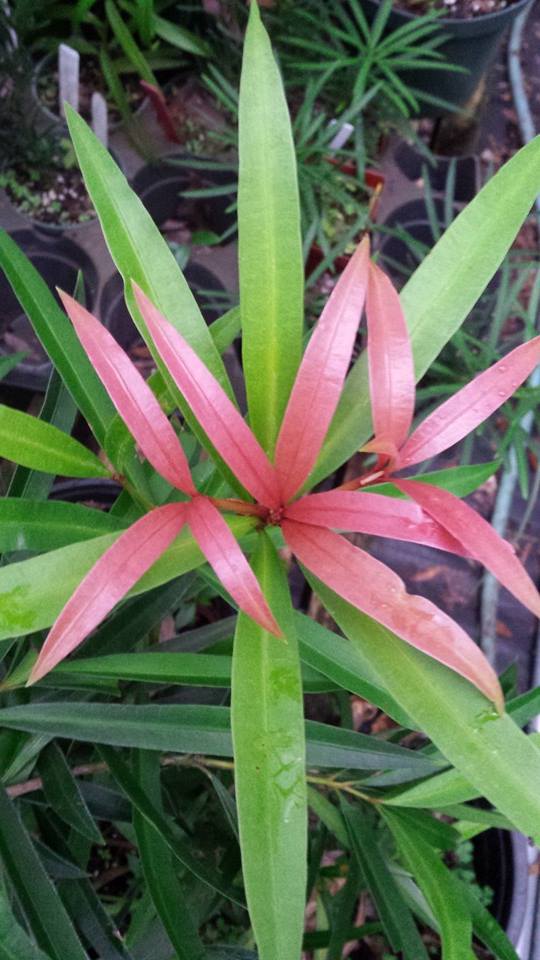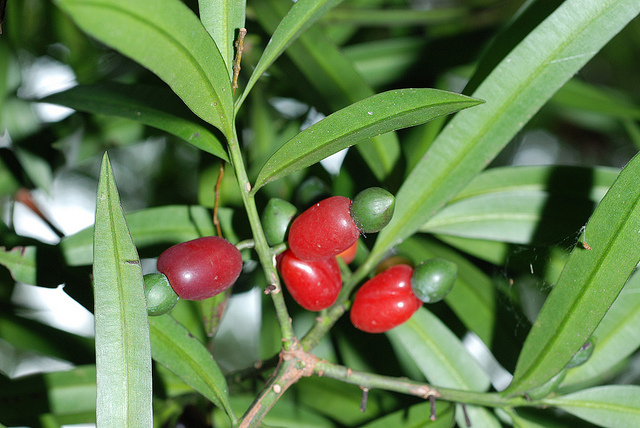Podocarpus nakaii, first described in 1916 by BunzŠ Hayata (1874-1934), is commonly known as Nakai podocarp, Nakai yellowwood, or as Š°æ¹¾ç½—æ±‰æ¾ (tai wan luo han song) in the Chinese language.
Description. Nakai yellowwood is a evergreen coniferous species of tree which will grow to mature heights of 60 feet (18 m) tall with a trunk up to 6 feet (1.8 m) in diameter at breast height. Bark is pale gray in color and fibrous. Branches are terete in form and glabrous in texture. Foliage buds are globose with wholly overlapping scales that are blunt at the apex; primary scales are triangular; secondary scales are rounded.
Leaves grow alternate and crowded at the apex of branchlets. The leathery leaf blades are bright green adaxially, pale green (drying brownish) and glaucous abaxially, linear, linear-lanceolate, or lanceolate in shape, 2 to 4.2 inches (5 - 10.5 cm) long and 0.32 to 0.55 inch (0.8 - 1.4 cm) wide, with a midvein which is adaxially raised as a ridge at least 0.02 inch (0.5 mm) wide.
Pollen cones axillary, solitary or in clusters of 2 or 3, sessile,(0.8 to 1.2 inches (2-4 cm) long, with several spirally arranged, basal bracts. Seed-bearing structures axillary, solitary. The seed receptacle is orange or scarlet when ripe, obconical-ellipsoid, 0.16 to 0.72 inch (4 - 9 mm) long and 0.12 to 0.24 inch (3 - 6 mm) broad, with 2 inconspicuous, longitudinal grooves. The seed itself is solitary, axillary, ovoid or ellipsoid-ovoid, (0.4 to 0.48 inch (1 - 1.2 cm) long and 0.28 to 0.32 inch (7 - 8 mm), with a large crest and narrow, pointed apex.
Distribution. This species is native to Taiwan - the northern and central parts of the island, growing scattered in broad-leaved forests. The IUCN reports that this species is facing a very high risk of extinction in the wild in the near future, due to recent and ongoing exploitation within a range that is already severely fragmented, with total population size estimated at fewer than 2,500 mature plants and no subpopulation containing more than 250 mature plants.

